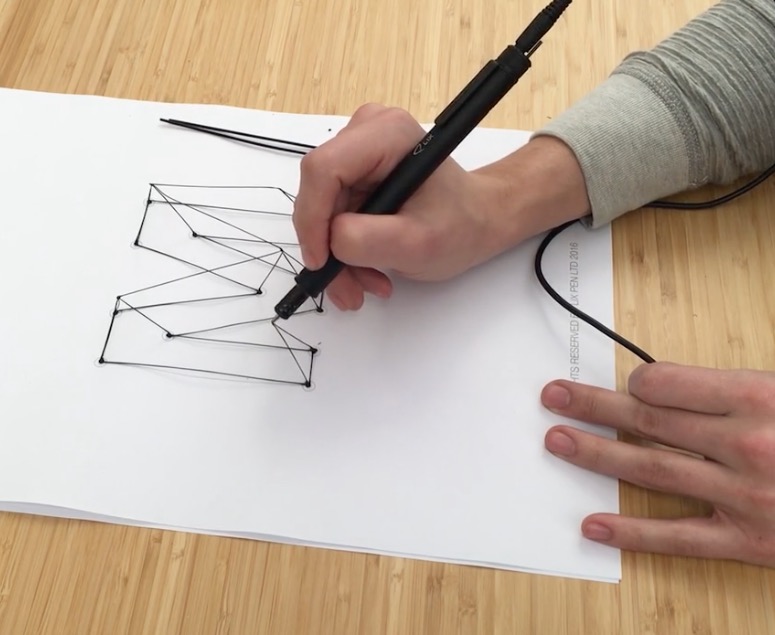
For several years now, we’ve all seen those inexpensive “3D Pens” that are for some reason thought related to 3D printing. I think not.
These devices are usually quite simple: a small motor pulls a standard 3D printing filament into a hot end and, if the temperatures are set correctly, pliable plastic emerges from the nozzle.
The operator is required to do everything else; extrusion occurs at a standard speed and volume, meaning the pen must be deftly moved by hand in appropriate directions to effect a “print”.
But is it really “printing”? In my mind, a “printer” is a device that takes a design and reproduces it – without human intervention. That’s precisely the opposite of how these pens work. They’re like artisan tools, requiring experience, skill and talent to operate – even if you have a great design.
They are hand tools, not printers.
Consider an analogy involving a CNC Mill, which uses a router mechanism to grind off a block of material to complete an object, while under continuous computer control. (In fact, that’s what CNC stands for: Computer Numerical Control!) You wouldn’t call a hand-operated router a printer, would you?
These 3D pens can also be used to repair flawed 3D prints by manually applying material where missing. However, in that sense they’re really no different than chisels, sandpaper or other hand tools for finishing a true 3D print.
Even in the use of these pens, I frequently find they are not producing 3D objects, but instead simple 2D forms “printed” on a flat surface. I suspect the reason for this is simply that few would have the endurance to painstakingly hold a 3D pen in mid-air for long periods. That’s what’s required to produce the 3D objects made with these pens, but few would go through the trouble to do so.
The pens have been quite popular, however, likely due to their extremely low cost – I’ve seen some as low as USD$20. It may be seen by purchasers as an inexpensive way to “get into 3D printing”, but it’s not really true.
The other issue with pens is that they can be very unsafe. As you may realize, the hot end of a 3D pen can be in excess of +200C. That oven-like temperature is literally in your hand! How many people have burned their hands on a 3D pen? We’ll never know, but it’s got to be more than zero.
You might suggest there are alternative 3D pens that use the UV-photocuring method, which does not involve heat. Yes, these 3D pens would avoid burns, certainly. But they introduce another, perhaps even worse danger scenario: many liquid photocurable resins are actually not safe for handling.
With those tools, you’ll surely spill some resin on your skin and that cannot be good.
The long term utility of such 3D pens is still unclear; they may be a fad in which people try them out and then put them away because it’s just too hard to make anything complicated with them.

